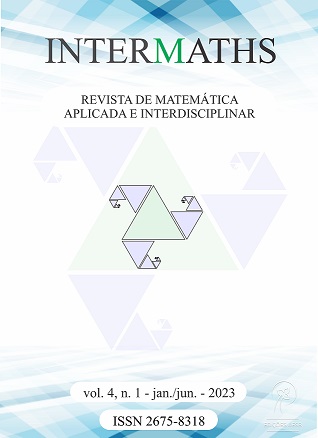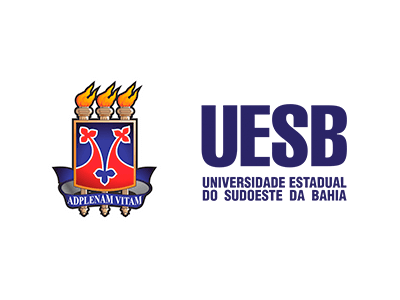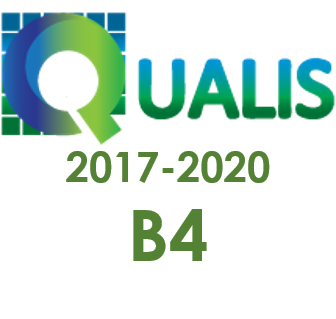A methodology to obtain accurate potential energy Functions for diatomic systems: mathematical point of view
DOI:
https://doi.org/10.22481/intermaths.v4i1.12921Palavras-chave:
Mathematical Analysis, Analytical potential energy functions, Born-Oppenheimer Approximation, Dunham coefficients, Morse-type potentialResumo
The mathematics used in physical chemistry has changed greatly in the past forty years and it will certainly continue to change more quickly. Theoretical chemists and physicists must have an acquaintance with abstract mathematics if they are to keep up with their field, as the mathematical language in which it is expressed changes. Thinking about it, in this article, we want to show some of the most important concepts of Mathematical Analysis involved in obtaining analytical functions to represent the potential energy interaction for diatomic systems. A basic guide for the construction of a potential based on Dunham's coefficients and an example of a new potential obtained from this methodology is also presented.
Downloads
Metrics
Referências
J. N. Murrell and S. Carter and S. C. Farantos and P. Huxley and A. J. C. Varandas, Molecular Potential Energy Functions. New York: Wiley, 1977.
D. Marx and J. Hutter. Ab Initio Molecular Dynamics. New York,: Cambridge University Press, 2009.
J. P. Araújo and M. Y. Ballester, “A comparative review of 50 analytical representation of potential energy interaction for diatomic systems: 100 years of history”, International Journal of Quantum Chemistry, vol. 121, pp.e26808 1–102, 2021. https://doi.org/10.1002/qua.26808
E. L. Lima, Análise Real: Funções de uma variável, Rio de Janeiro: IMPA, 2008.
J. L. Dunham, “The Energy Levels of a Rotating Vibrator ”, Physical Review, vol. 41, pp.721–731, 1932. https://doi.org/10.1103/PhysRev.41.721
P. M. Morse, “Diatomic Molecules According to the Wave Mechanics. II. Vibrational Levels”, Physical Review, vol. 34, pp.57–64, 1929. https://doi.org/10.1103/PhysRev.34.57
J. P. Araújo and M. D. Alves and R. S. da Silva and M. Y. Ballester, “A comparative study of analytic representations of potential energy curves for O2, N2, and SO in their ground electronic states”, Journal of Molecular Modeling, vol. 25, pp.1–17,2019. https://doi.org/10.1007/s00894-019-4079-3
J. N. Murrell and K. S. Sorbie, “New Analytic Form for the Potential Energy Curves of Stable Diatomic States”, Journal of the Chemical Society, Faraday Transactions 2, vol.70, pp.1552–1556, 1974. https://doi.org/10.1039/F29747001552
P. Huxley and J. N. Murrell, “Ground-state Diatomic Potentials”,Journal of the Chemical Society, Faraday Transactions 2, vol. 79, pp.323–328, 1983. DOI https://doi.org/10.1039/F29837900323
Y. P. Varshni, “Comparative Study of Potential Energy Functions for Diatomic Systems”, Reviews of Modern Physics, vol. 29, pp.664–682, 1957. https://doi.org/10.1103/RevModPhys.29.664
I. N. Levine, “Accurate Potential Energy Function for Diatomic Molecules”, The Journal of Chemical Physics, vol.45, pp.827–828, 1966. https://doi.org/10.1063/1.1727689
H. M. Hulburt and J. O. Hirschfelder, `‘Potential Energy Functions for Diatomic Molecules ”textitThe Journal of Chemical Physics, vol. 9, pp. 61–69, 1941. https://doi.org/10.1063/1.1750827
A. J. C. Varandas and J. D. da Silva, “Potential model for diatomic molecules including the united-atom limit and its use in a multiproperty fit for argon”,Journal of the Chemical Society, Faraday Transactions, vol. 88, pp. 941–954, 1992. https://doi.org/10.1039/FT9928800941
A. Aguado and M. Paniagua, “A new functional form to obtain analytical potentials of triatomic molecules”, The Journal of Chemical Physics, vol. 96, pp. 1265–1275, 1992. https://doi.org/10.1063/1.462163
R. Rydberg, “Graphische Darstellung einiger bandenspektroskopischer Ergebnisse”, Zeitschrift für Physik, vol. 73, pp. 376–385, 1932. https://doi.org/10.1007/BF01341146
O. Z. Klein, “Zur Berechnung von Potentialkurven für zweiatomige Moleküle mit Hilfe von Spektraltermen”, Zeitschrift für Physik, vol. 76, pp. 226–2355, 1932. https://doi.org/10.1007/BF01341814
A. L. G. Rees, “The calculation of potential-energy curves from band-spectroscopic data”, Proceedings of the Physical Society of London A, vol. 59, pp. 998–1008,1947. https://doi.org/10.1088/0959-5309/59/6/310
A. C. Hurley, “Equivalence of RydbergKleinRees and Simplified Dunham Potentials”, The Journal of Chemical Physics, vol.36, pp.1117–1118, 1962. http://dx.doi.org/10.1063/1.1732678
J. F. Ogilvie and D. Koo, “Dunham potential energy coefficients of the hydrogen halides and carbon monoxide”,Journal of Molecular Spectroscopy, vol. 61, pp. 332–336, 1976. https://doi.org/10.1016/0022-2852(76)90323-4
J. F. Ogilvie, “Dunham energy parameters of isotopic carbon monoxide, hydrogen halide, and hydroxyl radical molecules”, Journal of Molecular Spectroscopy, vol. 69, pp.169–172, 1978. https://doi.org/10.1016/0022-2852(78)90056-5
J. P. Araújo and M. Y. Ballester, “New generalized potential energy function for diatomic systems”, Physica Scripta, vol. 96, pp.125407 1-10, 2021. https://doi.org/10.1088/1402-4896/ac3150
Downloads
Publicado
Como Citar
Edição
Seção
Licença
Copyright (c) 2023 INTERMATHS

Este trabalho está licenciado sob uma licença Creative Commons Attribution 4.0 International License.
 All content of Revista INTERMATHS/Journal INTERMATHS is licensed under a Creative Commons - Atribuição 4.0 Internacional (CC-BY 4.0).
All content of Revista INTERMATHS/Journal INTERMATHS is licensed under a Creative Commons - Atribuição 4.0 Internacional (CC-BY 4.0).







